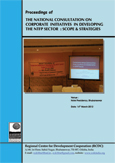 The national consultation on corporate initiatives in developing the ntfp sector : scope & strategies
The national consultation on corporate initiatives in developing the ntfp sector : scope & strategies
Publication Date : 14-Mar-2012
Indian industries have been sourcing their raw materials from the rich & diverse nontimber
forest product(NTFP) resources of the country since long
|
 Jhar Darab
Jhar Darab
Publication Date : 28-Jun-2012
Jhar Darab
|
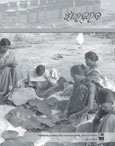 Jhar Darab
Jhar Darab
Publication Date : 28-Jun-2012
Jhar Darab
|
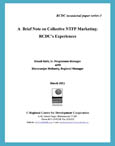 A Brief Note on Collective NTFP Marketing: RCDC's Experience
A Brief Note on Collective NTFP Marketing: RCDC's Experience
Publication Date : 07-Feb-2013
Collective marketing of NTFPs has been a common strategy to help secure the rights of & benefits for the primary collectors, particularly for women. As well-known the traders and even
the intermediaries are men whereas the primary collectors are usually women. Traders thrive on the ignorance & innocence of these primary collectors, and collective effort gives the latter a
better scope to deal with the hard realities of market dynamics. It gives a better bargaining power, helps control the process from collection to value addition followed by marketing so as to
facilitate sustainable extraction practices, relaxes the burden of loss by sharing among the members, creates better scope for availing support for capacity building (technical/financial), and
ultimately makes them able to go beyond trading and support something for the cause of the society(like, facilitating the implementation of Forest Rights Act, providing employment to
physically-challenged or otherwise vulnerable individuals, etc.). When cooperatives extend their services for the greater benefit of the society, they become what may be called Socially
Embracing Cooperatives.
|
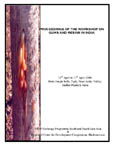 Procedures of Workshop on Gums & Resins in India
Procedures of Workshop on Gums & Resins in India
Publication Date : 07-Feb-2013
Gums and resins, commonly used in every day life, are having ample importance as non timber forest produce. Apart from use in torches, embalming chemicals, waterproofing and caulking ships, incense, paints and medicines, a major portion of the gums and resins are also used as food additives. So food industries worldwide are emerging as potential users of gums and resins. Gums and resins are having a niche market globally. A recent statistics says
export of gums and resins from India were to the tune of Rs. 5 billion per annum. Inspite of a shift in the global market from natural products to synthetic one, the former has its own place
and share in the market. The reason is the growing consciousness for organic/ natural foods. Still a lot to be done for accelerating the production and trade situation both qualitatively and
quantitatively. Opportunities to be explored after having a first hand knowledge on the world trade scenario of the produce. Many organizations are working in this line to know the
situation. NTFP Exchange Programme in South and South East Asia, a joint initiative of local and regional NGO’s and indigenous organizations in the region is doing a study on the world
market of resins and gums. The objective of the study is to assess the overall trade policies and instruments, market situation, production, consumption, value chain, technologies etc.
The expected outcome of the study would help in developing strategies for the future.
|
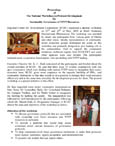 Proceedings of National Workshop on Protocol Development for Sustainable Governance of NTFP Resources
Proceedings of National Workshop on Protocol Development for Sustainable Governance of NTFP Resources
Publication Date : 07-Feb-2013
Regional Centre for Development Cooperation (RCDC) organized a national workshop on 25th and 26th of May, 2010 at Hotel Hindustan
International, Bhubanewar. The workshop was attended
by ninety one participants from various parts of Odisha
and other states. Mostly representatives of community
forest protection groups dominated the scene as this
workshop was primarily designed to give leading role to
the communities. And to support the community
initiatives, technical experts from ECOCERT and some
other agencies were also invited. The participants
included some cooperative functionaries who are dealing with NTFP trading.
|
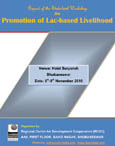 Report of the State Level Workshop on Lac Based Livelihood
Report of the State Level Workshop on Lac Based Livelihood
Publication Date : 07-Feb-2013
The two-day workshop was organized by RCDC in Hotel Suryansh, Bhubaneswar on 8th and 9th of November 2010. The objectives of the workshop were as under:
(a) To provide a platform to unite various stakeholders of lac, particularly the primary collectors/
cultivators, processors and traders for a common cause i.e. promotion of lac based livelihood in the state
that already has a rich tradition of lac based activities.
(b) To prepare a set of recommendations for submission to the government so that a pro-poor policy to this effect can be adopted.
The workshop was supported by Key Stone Foundation, Kotagiri. More than 80 participants from different parts of the state attended this programme majority of whom were cultivators and artisans.
|
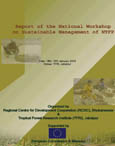 Report of the National Workshop on Sustainable Management of NTFP
Report of the National Workshop on Sustainable Management of NTFP
Publication Date : 07-Feb-2013
The two-day workshop was organized with the joint endeavor of Regional Centre for Development Cooperation, (RCDC), Bhubaneswar in collaboration with Tropical Forest Research Institute (TFRI),
Jabalpur at TFRI campus Jabalpur. The objectives of the workshop are:
1. To identify issues relate to sustainable management of forest and NTFPs in different states and takes stock of initiatives taken to address these issues by the forest department, researchers,
NGOs etc.
2. To identify and develop models of crosscutting, especially in the context of primary stakeholders, i.e. forest protecting communities and primary NTFP collectors.
3. To develop a uniform approach for planning on sustainable forest management with the roles of various stakeholders clearly defined.
|
 The Industrial Perspective of NTFP in India
The Industrial Perspective of NTFP in India
Publication Date : 07-Feb-2013
Indian industries have been sourcing their raw materials from the rich & diverse non-timber
forest product resources of the country since long. As detailed below they use either one or
more of these products and are in some cases almost exclusively or critically dependent on
the same:
• Paper industry: Bamboo(critical), sabai grass
• Bidi industry: Tendu leaf(critical)
• Lac processing industries: Lac(critical)
• Leather industry: Chebulic myrobalan and some other natural tan-stuff from forest
• Pharmaceuticals: Wide range of NTFPs used(critical in some cases, like Boswellia
serrata cream produced by CIPLA)
• Cosmetics: Wide range of NTFPs used(critical in some cases)
• Agarbatti industry: bamboo stick, glutinous bark, sal resin, guggul, etc.(critical)
• Vanaspati industry: mahua oil, sal seed oil, etc.
• Bio-fuel industry: karanj seed, etc.
|
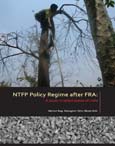 NTFP Policy Regime after FRA
NTFP Policy Regime after FRA
Publication Date : 31-Dec-2010
RCDC intends to bring a policy change through this publication at appropriate level, with corresponding reflections at
the ground level. Whereas the present study analysed the situation in eight states of India, the basic observations
are more or less same throughout the country; hence the basic recommendations & conclusions are applicable for the
country. However, some of the statistical data might have changed in the meantime, and also few policy changes
might also have occurred at the state level. Readers are therefore advised to update themselves with the latest
developments.
|
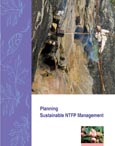 Planning Sustainable NTFP Management
Planning Sustainable NTFP Management
Publication Date : 30-Apr-2013
Non-Timber Forest Products/Produces(NTFPs), otherwise mentioned as Non-Wood Forest Products/Produces(NWFPs) in the west and as Minor Forest Products/Produces(MFPs) in India usually referred to the secondary production in the forest in the timber-centric management approach. During the colonial period, their list included all kinds of forest products other than timber and firewood, ranging from fruits/flowers/leaves to minerals and wildlife products such as feathers.
|
 Planning Sustainable NTFP Management (Odia)
Planning Sustainable NTFP Management (Odia)
Publication Date : 30-Apr-2013
Non-Timber Forest Products/Produces(NTFPs), otherwise mentioned as Non-Wood Forest Products/Produces(NWFPs) in the west and as Minor Forest Products/Produces(MFPs) in India usually referred to the secondary production in the forest in the timber-centric management
approach. During the colonial period, their list included all kinds of forest products other than timber and firewood, ranging from fruits/flowers/leaves to minerals and wildlife products such as
feathers.
|
 Planning Sustainable NTFP Management (Hindi)
Planning Sustainable NTFP Management (Hindi)
Publication Date : 30-Apr-2013
Non-Timber Forest Products/Produces(NTFPs), otherwise mentioned as Non-Wood Forest Products/Produces(NWFPs) in the west and as Minor Forest Products/Produces(MFPs) in India usually referred to the secondary production in the forest in the timber-centric management
approach. During the colonial period, their list included all kinds of forest products other than timber and firewood, ranging from fruits/flowers/leaves to minerals and wildlife products such as
feathers.
|
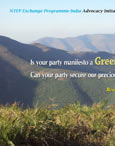 Green Manifesto
Green Manifesto
Publication Date : 22-Mar-2014
The NGO sector is probably the third largest organized employment sector after the public- and private sectors.
NGOs work in the public interest with a mixed attitude of professionalism and voluntarism to supplement and/or
complement the efforts of a welfare State(government). Their strength lies in their flexibility and adaptability to
the work environment, which helps them act swiftly unlike the government machinery which is tangled with redtapism.
They successfully link academicians, technocrats, bureaucrats, social scientists, policy makers, and
other stakeholders for the greater cause of the people and the nation.
Develop and promote the NGO sector as the development partner;
help stabilize this potential sector for employment.
|
 Kendu Leaf Workshop Report
Kendu Leaf Workshop Report
Publication Date : 18-Apr-2014
Kendu Leaf Workshop Report 19th Dec 2013
|
 Issues and Challenges in Management and Trade of Bamboo in Orissa
Issues and Challenges in Management and Trade of Bamboo in Orissa
Publication Date : 15-Jul-2020
.
|
 Community Forest Management Manual
Community Forest Management Manual
Publication Date : 15-Jul-2020
.
|
 Sal Seed Procurement and Trade Operations
Sal Seed Procurement and Trade Operations
Publication Date : 15-Jul-2020
.
|
 Policy Prescriptions for Sustainable Management of NTFPs in the Central Indian States
Policy Prescriptions for Sustainable Management of NTFPs in the Central Indian States
Publication Date : 15-Jul-2020
..
|
 Monopoly to Privatisation
Monopoly to Privatisation
Publication Date : 15-Jul-2020
.
|